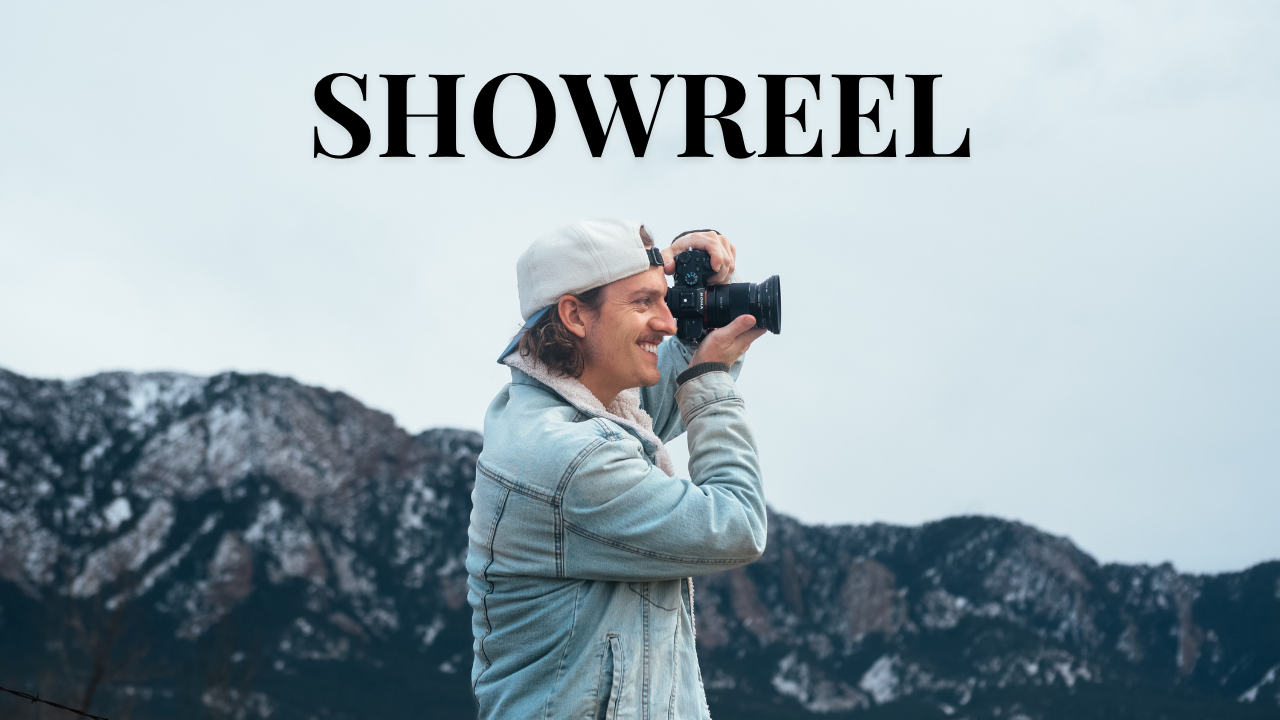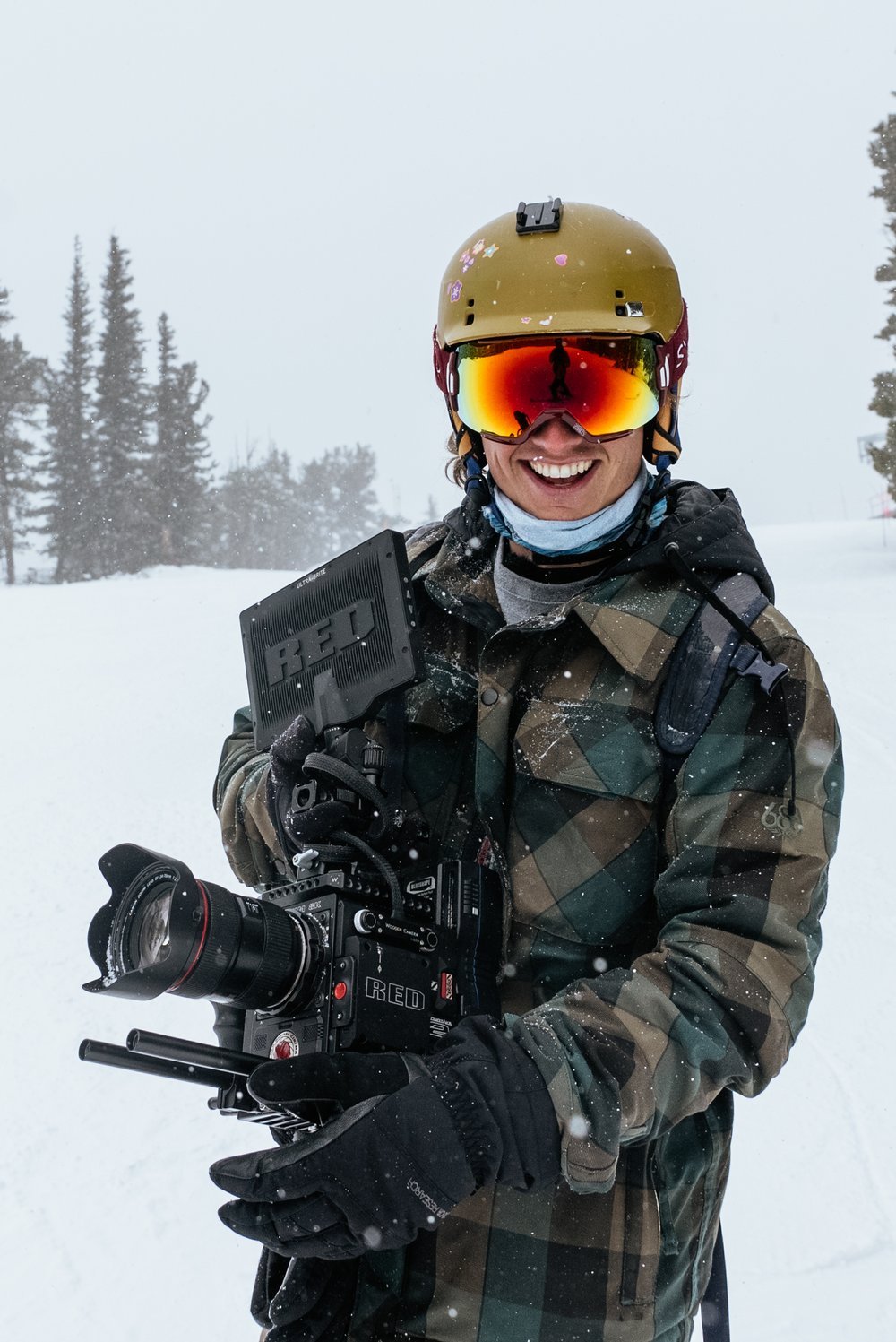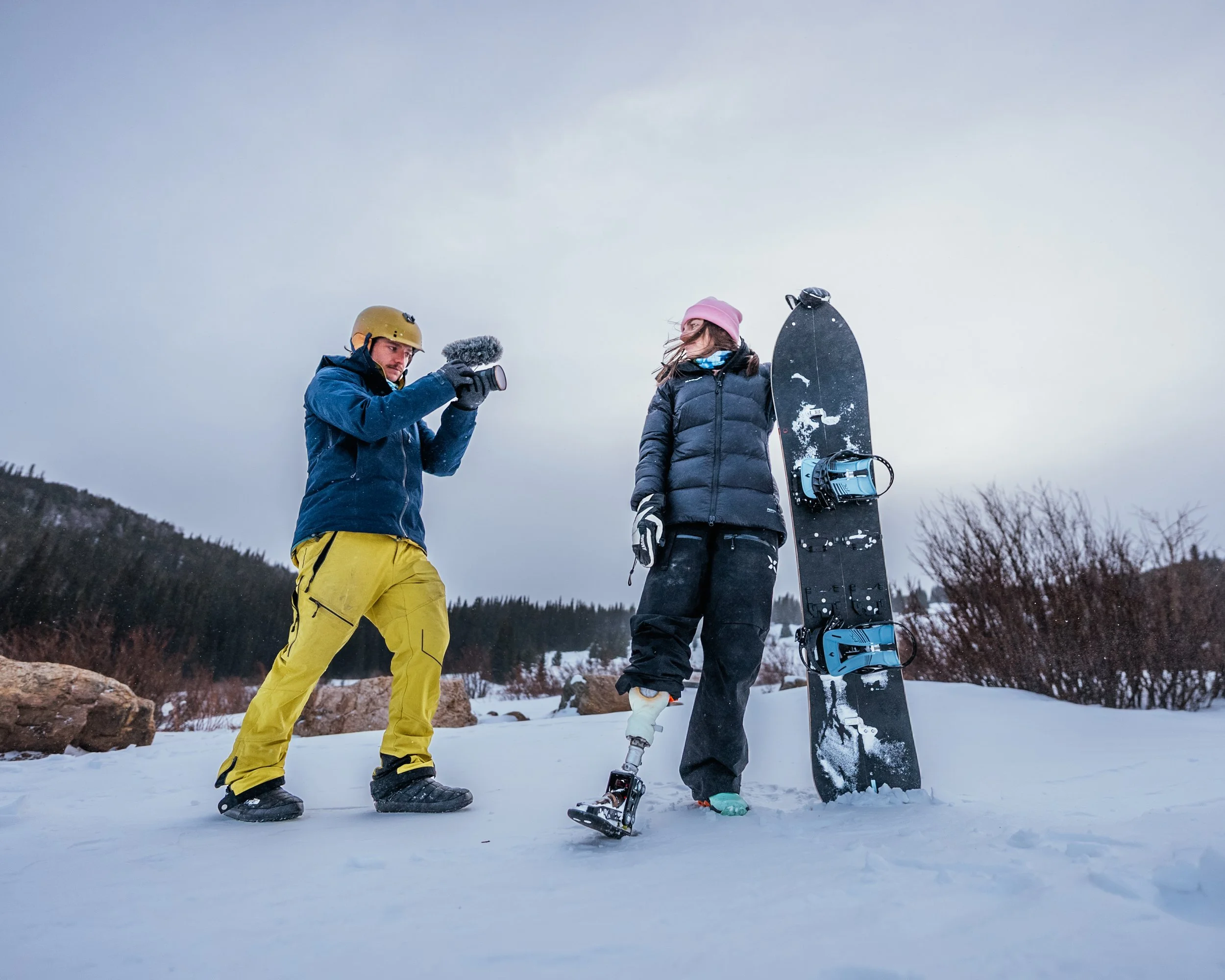The Complete Guide to Video Production for Outdoor Brands
The outdoor world is one of the most visually compelling spaces on the planet. It’s filled with high-alpine mornings, crashing waves, red rock canyons, and the kind of memorable, authentic moments that make audiences pause mid-scroll. Which is why outdoor brands, from performance apparel to wellness companies to emerging lifestyle startups, rely so heavily on video to tell their stories.
But the outdoor industry has changed. Audiences are more discerning, content moves faster than ever, and authenticity matters more than glossy perfection. For outdoor brands aiming to stand out, the real question isn’t whether to invest in video but how to create video content that feels memorable, resonates emotionally, and actually performs.
This guide breaks down everything an outdoor brand needs to know about the video production process, from strategy and story development to logistics, crew structure, deliverables, and distribution.
Whether you’re planning your first outdoor campaign or refining your approach for your next big launch, this guide will walk you through how to create outdoor video content that’s both beautiful and effective.
Before we dive in, let me quickly introduce myself:
Hey, I’m Roo - I’m a two-time Emmy-nominated commercial director based in Boulder, Colorado. I’ve spent the last decade crafting stories and moments that move people, working with brands like Patagonia, The North Face, Microsoft, the Olympics, and Netflix to tell grounded, human stories rooted in the outdoors and lifestyle.
Why Outdoor Brands Need Video More Than Ever
Video has become the primary language of outdoor storytelling. In the past decade, we’ve watched the industry shift from product-first marketing to values-driven storytelling with films that show what a brand believes, not just what it sells.
Here’s why video matters so much for outdoor brands:
1. Outdoor consumers buy based on identity, not product features.
People choose outdoor brands that reflect who they are or who they want to be. They want to feel something that takes them beyond their daily lives like freedom, belonging, resilience, possibility. Video is unmatched when it comes to evoking emotion inside a visual world.
2. Video is the most effective way to show real use cases.
Outdoor gear is built for environments that demand durability and trust. A jacket copywriting description can tell you it’s waterproof—but a shot of someone breaking trail in a storm proves it.
3. Outdoor audiences crave authenticity.
They can sense staged or overproduced content from a mile away. What they want is real stories in real places with real people. Good video production lets brands show the truth instead of telling it.
4. Video is the backbone of modern cross-platform marketing.
One shoot can produce:
A hero film for YouTube
A 30-second ad for paid media
A 15-second version for Instagram
A :06 bumper for YouTube
Stills and GIFs for email and web
BTS for community engagement
For outdoor brands with limited time or smaller teams, video has the highest ROI of any content format.
The Foundation:
Start With Strategy, Not A Shot List
The biggest mistake outdoor brands make is jumping straight into creative. They start by thinking about locations or talent or drone shots before defining what the video is actually supposed to do.
A strong outdoor video begins with a strategic foundation.
Every great outdoor video answers four questions:
1. Who is this for?
Weekend warriors? Trail runners? New campers? Technical mountaineers? Wellness-focused outdoor consumers?
Each requires a completely different narrative approach.
2. What is the purpose of this video?
Brand awareness? Product launch? Community building? Retail support? Event recap?
Without clarity, even the most beautiful video risks saying nothing.
3. What emotion should the viewer feel?
This is the core of the outdoor industry.
Is the goal to evoke:
Awe
Calm
Grit
Belonging
Confidence
Joy
Nostalgia
Inspiration
Determine the feeling and every creative decision becomes easier.
4. What action do we want viewers to take?
Buy, follow, subscribe, apply, learn more, build affinity or simply remember the brand.
When strategy comes first, creative becomes intentional, efficient, and effective. When strategy is absent, brands waste time, budget, and opportunity.
Choosing the Format:
What Type of Outdoor Video Are You Making?
Outdoor brands often assume they need one hero film, but the industry now thrives on multi-format storytelling. Here are the most effective video formats outdoor brands use today:
1. Brand Films (60–120 seconds)
High-level narrative pieces that articulate a brand’s values.
Think: Patagonia’s activism films, Yeti’s character stories.
Best for:
Brand awareness
Long-term positioning
Emotional connection
2. Lifestyle Commercials (15–45 seconds)
The classic outdoor ad: visuals-first, product-integrated, feeling-driven.
Best for:
Paid social
Hero web videos
Retail loops
3. Product Stories (30–60 seconds)
A behind-the-scenes look at why a specific product matters.
Not “here’s the feature”—but “here’s the belief behind it.”
Best for:
Product launches
Email marketing
YouTube pre-roll
4. Mini-Documentaries (5–15 minutes)
Profiles of athletes, ambassadors, or community stories.
Best for:
YouTube retention
Brand loyalty
Social proof
Internal brand culture
5. Social-First Vertical Videos (6–15 seconds)
Quick, high-retention cuts designed for TikTok, Reels, and Shorts.
Best for:
Awareness
Re-marketing
Multi-touch storytelling
6. UGC-Style / Hybrid Pieces
A mix of polished footage with handheld phone moments for authenticity.
Best for:
Lifestyle brands
B-roll libraries
Community building
A strong outdoor campaign often uses 2–4 of these formats at once.
Building the Creative Concept
Once the strategic foundation is clear, it’s time to build the creative. Outdoor concepts typically fall into a few high-performing frameworks:
1. Character-Driven Storytelling
People don’t connect with landscapes; they connect with humans inside landscapes.
These films follow a character through a meaningful moment or challenge.
2. Emotion-Driven Lifestyle Montage
A visually rich sequence built around a feeling: warmth, grit, curiosity, movement.
3. World-Building Narratives
You immerse viewers in the brand’s “universe”—the tone, palette, people, attitude.
4. Problem → Insight → Transformation
The classic outdoor gear structure:
Show the struggle → show how the brand fits into the solution → show the emotional payoff.
5. Micro-Moments & Authenticity
The new trend: quick, textured fragments that feel lived-in rather than staged.
Boiling oatmeal, cold hands, early alarms, quiet pre-sunrise stillness.
For outdoor brands, realness will almost always outperform polish.
Casting:
Why People Matter More Than Locations
Great outdoor videos aren’t about how epic the place is. They’re about how real the person in the frame feels.
You want:
People who actually live the lifestyle
Authentic movement (how a real trail runner runs vs. an actor pretending to run)
Diversity and representation handled with intention, not tokenization.
Human texture (micro expressions, micro moments)
A relationship with the environment
Viewers can instantly sense when a person is uncomfortable with the setting or unfamiliar with the activity. Casting real participants like athletes, hobbyists, locals, guides creates a massive increase in trust.
My work with Patagonia
Locations: Beautiful vs. Believable
In the outdoor world, location is character.
But the best locations aren’t always the most epic, they’re the most authentic to the story.
For example:
A film about a gravel cyclist may perform better shot on a quiet and flat Colorado dirt road than on a dramatic alpine pass that they’re not familiar with.
A wellness brand might perform better in soft woodland scenes than on a rugged summit.
Location must align with:
The brand’s tone
The product’s use case
The emotional arc
The intended audience
This is where a director deeply familiar with outdoor spaces becomes invaluable, they know what locations feel truthful and what feels performative.
Production Logistics:
What Outdoor Brands Often Overlook
Outdoor shoots are a different universe than studio or city-based productions. The logistics matter just as much as the creative. Weather, light, terrain, and physical access dictate what’s possible and a director who understands these realities will save a brand massive time, budget, and risk.
Here’s what outdoor brands need to dial in early:
1. Weather Windows
Every outdoor shoot needs buffer days.
Storm systems, wind, wildfire smoke, heat waves, or early-season snow can derail a shoot instantly.
A strategic director builds:
Primary shoot windows
Backup shoot windows
Contingency locations
This is why hiring a director who shoots outside all the time is invaluable, they understand how quickly things change and how to adapt without compromising the story.
2. Light Planning
Outdoor light is your greatest creative tool and your biggest constraint.
A good director maps:
Sunrise & sunset angles
Where shadows fall
Ridge light times
Cloud coverage patterns
How long certain locations stay usable
Outdoor shoots often hinge on getting 15–45 minutes of perfect light. Planning for it is an art form.
3. Safety & Physical Risk
Outdoor environments can be unpredictable.
Brands need to consider:
Athlete/actor safety
Crew physical limits
Hydration & altitude
Access routes
Emergency plans
Permits & regulations
A director experienced in outdoor landscapes knows how to balance safety with creative ambition.
4. Transportation & Gear Movement
Crews may need to hike, skin, bike, or 4x4 into locations. The best outdoor directors build lean setups—gear that is durable, packable, and versatile.
This is why traditional production companies often struggle with outdoor shoots: the model is too heavy. You need crews who can move.
The Outdoor Production Crew:
Who You Actually Need
Outdoor productions don’t follow the typical big-set hierarchy. They run lean, collaborative, and flexible.
Here’s the structure that I’ve often seen work best but just know that you can do SOOOOO much with just one person with a camera:
1. Director (Creative & Strategy Lead)
Guides story, visuals, talent, pacing, and audience connection.
Ideally someone experienced in both filmmaking and brand strategy.
2. DP / Camera Operator
In outdoor work, these roles are often combined. Sometimes combined with the director too depending on the location and budget.
For a camera operator want someone who can:
Move fast
React to outdoor lighting
Self-manage exposure & composition
Shoot handheld, gimbal, drone, and long lens
3. 1st AC (Focus Puller / Camera Support)
If the project is slightly larger, a 1st AC is invaluable for:
Pulling focus during fast outdoor movement
Swapping lenses
Maintaining camera integrity in harsh conditions
4. Sound Mixer (for dialogue or doc-style pieces)
Outdoor audio is tricky with wind, water, animals, and crowd noise often disrupting the flow.
A sound mixer helps elevate quality dramatically.
5. Producer / Coordinator
Handles logistics, schedule, talent communication, and safety.
Critical for keeping things moving smoothly.
6. Photographer (If Needed)
Outdoor brands get huge ROI by capturing stills during video shoots so would highly recommend having a photographer along on the video production.
7. Drone Operator (if separate from DP)
For smaller productions or restricted airspace situations, this might not be available but drone operators easily elevate the footage of your shoot.
8. PA / Utility
A huge asset for:
Carrying gear
Managing batteries
Helping with logistics
Keeping things organized
Small outdoor crews typically run with anywhere from 2–6 people.
Bigger lifestyle campaigns may use 10–20.
The key is keeping it lean enough to move quickly but big enough to handle the story.
For the shoots I normally do, I often am leaning on smaller crews of around 3 people (myself as producer/director/camera operator, a PA and a photographer.)
Click below to see what what I’ve directed and produced with small teams
Shot Strategy:
How Outdoor Brands Capture Emotion
Outdoor video production is not just about documenting action. The best campaigns lean into a mix of:
1. Wide Environmental Frames
Establish place, scale, and mood.
2. Tight Character Moments
Hands tying shoes, breath in cold air, wind on a jacket, focus in the eyes.
These micro-moments sell emotion.
3. Mid-Action Lifestyle Shots
Running, climbing, paddling, hiking, biking - featuring movement that looks natural, not staged.
4. Textural Details
Firelight, snow crystals, dusty gravel, flowing water.
Texture is what makes outdoor content feel genuine and can transport viewers.
5. Authentic Transitions
Packing gear, warming hands, morning rituals, the messy parts of adventure.
These are the shots audiences remember because they’ve lived them.
The best outdoor directors layer all of this into a cohesive emotional arc.
Just a reminder to contact me if you want to work with an outdoor director who gets all this stuff :)
Gear Choices:
What Actually Matters for Outdoor Brands
Here’s the truth: gear does not make or break your outdoor campaign.
But choosing the right gear for the conditions does.
Camera Bodies
Outdoor directors typically lean toward things that are light and fast:
Sony FX6 / FX3
RED Komodo / V-Raptor
Canon C70 / R5C
Arri Alexa Mini (for large-budget, controlled-access shoots)
Key criteria:
Low-light performance
Dynamic range
Weather resistance
Portability
Lenses
Outdoor brands need a mix:
24–105mm or 24–70mm (run-and-gun staple)
70–200mm (compression for landscapes & action)
14–24mm (big wides)
A handful of fast prime lenses: 14mm, 35mm, 50mm 85mm, 100mm are the most common I’ve seen.
Movement Tools
Gimbals for smooth lifestyle shots
Tripods for controlled landscapes
Drones for establishing and scale
Handheld for authenticity
Audio
Outdoor audio requires:
Shotgun mics with deadcats
Lav mics with wind protection
Portable mixers
Backup audio plans
The best outdoor crews pack light but pack smart.
On-Set Workflow:
How Outdoor Shoots Flow Smoothly
Outdoor shoots reward preparation and responsiveness.
1. Pre-Call Setup
Check weather, wind, light, and terrain.
Load gear and preload batteries.
2. Location Blocking
Walk through where talent will move.
Check sun position.
Plan wind angles for audio.
3. Shoot the Broad Arc First
Capture wide environmental frames at perfect light.
4. Capture Emotional Beats
Once the story beats appear focus on the small moments, transitions, interviews and human connection.
5. Build Modular Deliverables
Shoot each scene with versioning in mind:
Horizontal
Vertical
Close-ups
Wides
Action + stillness
Outdoor brands always need versatility.
Post-Production:
Where Outdoor Stories Take Shape
Editing outdoor content is equal parts craft and strategy.
1. Story Assembly
Start with emotion, not chronology.
Outdoor audiences want to feel before they think.
2. Music Selection
Music determines tone.
For outdoor brands:
Acoustic for warmth
Pulsing electronic for grit
Orchestral for awe
Ambient for reflection
3. Color Grading
Outdoor grading must:
Maintain natural tones
Highlight texture
Preserve dynamic range
Avoid over-stylization
A washed-out or neon-looking outdoor film breaks trust instantly.
4. Graphics & Titles
Use thoughtful typography and subtle overlays to maintain brand tone.
5. Versioning
Outdoor brands often need the following formats:
16:9
9:16
4:5
1:1
6-second cuts
15-second ads
30–60 sec hero edits
Your editor and director must plan for this from the start.
Distribution Strategy:
Where Outdoor Brands Win Big
Presenting three of my outdoor documentaries at a film festival in the U.K.
It’s not enough to produce a great outdoor video.
It must live in the right places.
High-performing platforms include:
YouTube Ads
Instagram Reels
TikTok
Paid social
Athlete ambassador channels
Website hero video
Email marketing
Retail displays
Trade show booths
Brand partnerships
Outdoor brands get the biggest ROI when they think in systems, not individual placements.
Set up a system so one piece of content can be repeated across various platforms.
Maximizing ROI:
How One Shoot Can Become 40+ Assets
One of the biggest advantages of outdoor video production is efficiency. A single shoot can yield:
A hero brand film
A product story
A character mini-doc
3–5 social edits
10–20 reels
50+ photo stills
BTS footage
GIFs & motion graphics
Website banners
Email headers
This is where strategy-led direction turns $1 spent into $10 of value.
Conclusion: Why Outdoor Brands Need Strategic Video Production
Outdoor video production is a tricky business but hopefully you now understand that getting memorable content is about going beyond the scenery and capturing the feeling.
The brands that perform best aren’t the ones with the biggest budgets or flashiest gear, they’re the ones who understand how to tell meaningful stories rooted in strategy, emotion, and authenticity.
When you partner with a director (like me) who lives the lifestyle, understands brand psychology, and knows how to create assets built for performance, every video becomes more than content, it becomes a tool for growth.
In a world where attention is the new currency, the combination of strategy + story is what helps outdoor brands rise above the noise.
If you’re looking for an outdoor director, let’s chat! Fill out the form below to catch up and see how we can make something memorable :)
Let’s Connect
Roo is an Emmy nominated commercial/documentary filmmaker and photographer based in Boulder, Colorado but travels all around the world for his filmmaking career. He has directed documentaries for Patagonia in California, produced films for Outside Magazine throughout Europe and Africa, camera operated for Netflix in the Rocky Mountain West, photographed among indigenous communities in South America, and has received notable recognition in the outdoor industry for his work telling uplifting stories in the outdoor space.

















